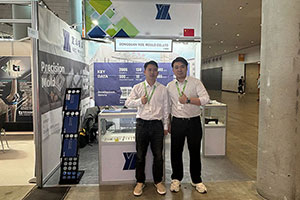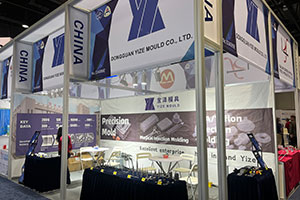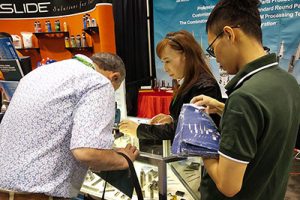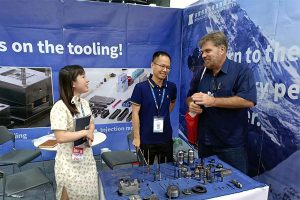Comprehensive Analysis of Tungsten Carbide Performance Requirements
In the vast universe of metallic materials, Tungsten carbide stands out with its unique physical and chemical properties, shining brightly in many fields. As a leading hard alloy, the performance […]
In the vast universe of metallic materials, Tungsten carbide stands out with its unique physical and chemical properties, shining brightly in many fields. As a leading hard alloy, the performance requirements of Tungsten carbide directly relate to its application effectiveness and service life. This article will delve into the performance requirements of Tungsten carbide, presenting its performance characteristics clearly through detailed data and information, helping you fully understand and grasp this material.
I. Overview of Tungsten Carbide
Our factory business: carbide parts, mold parts, medical injection molds, precision injection molds, teflon PFA injection molding, PFA tube fittings. email: [email protected],whatsapp:+8613302615729.
Tungsten carbide, also known as hard alloy, is a composite material sintered with refractory metal tungsten carbide (WC) as the main component, supplemented by metals such as cobalt (Co), nickel (Ni), or iron (Fe) as the bonding phase. With its outstanding properties such as high hardness, wear resistance, heat resistance, corrosion resistance, and toughness, it is widely favored in fields such as cutting tools, mold manufacturing, aerospace, and oil extraction.
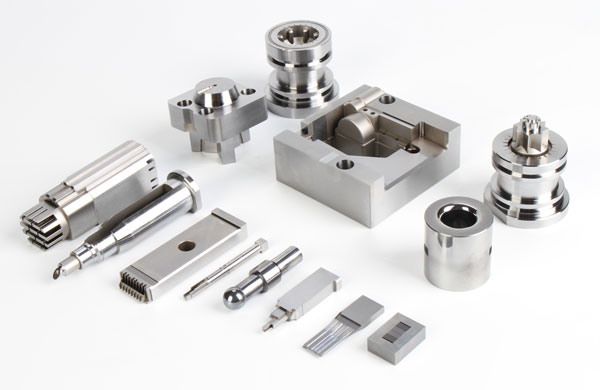
II. Detailed Performance Requirements of Tungsten Carbide
- High Hardness and Wear Resistance
The primary characteristics of Tungsten carbide lie in its high hardness and wear resistance. Its hardness often reaches above 90HRA, far exceeding that of ordinary steels. This high hardness allows Tungsten carbide to maintain efficient cutting and long service life when manufacturing cutting tools and molds. At the same time, its excellent wear resistance ensures low wear rates during long-term use, further extending its service life.
- Excellent Heat Resistance
Tungsten carbide needs to have excellent heat resistance to adapt to high-temperature environments. At high temperatures, Tungsten carbide maintains its hardness and rigidity, without easy softening or deformation. Experimental data shows that its hardness remains basically unchanged at 500°C, and it still has high hardness at 1000°C, making it promising in fields such as aerospace and automobile manufacturing.
- Good Corrosion Resistance
Tungsten carbide also needs to have good corrosion resistance to cope with acidic, alkaline, and other corrosive environments. In industries such as chemicals and oil, equipment often needs to withstand the erosion of corrosive media. The corrosion resistance of Tungsten carbide allows it to be used long-term in harsh environments without corrosion or damage, which is of great significance for improving the stability and service life of equipment.
- Good Toughness
Although Tungsten carbide is hard, it also needs good toughness. Toughness refers to the ability of a material to resist fracture when subjected to impact or vibration. The toughness of Tungsten carbide allows it to maintain stability and reliability when subjected to impact and vibration, which is particularly important when manufacturing components such as hammers and hammer heads that need to withstand impact.
- Machinability
The machinability of Tungsten carbide is also one of its performance requirements. Due to its high hardness, special processing equipment and processes are required. However, Tungsten carbide needs to maintain good precision and surface quality during processing, with minimal defects such as cracks and deformations, to ensure that the processed components meet the usage requirements.
- Density and Strength
The density and strength of Tungsten carbide are also important performance indicators. Its density typically ranges from 11.0 to 15.0g/cm³, with different densities and strengths for different applications. High-density Tungsten carbide materials have better strength and wear resistance, making them suitable for manufacturing high-load components. At the same time, the strength requirements are also high to meet the usage demands in various complex working conditions.
III. Ways to Achieve Tungsten Carbide Performance Requirements
To achieve the performance requirements of Tungsten carbide, optimization and improvement are needed in aspects such as material preparation, heat treatment, and processing technology. During material preparation, strict control of raw material composition and sintering process parameters is necessary to ensure that key performance indicators such as hardness and wear resistance of Tungsten carbide meet the requirements. During heat treatment, appropriate processes should be adopted to improve the properties of Tungsten carbide, such as increasing hardness and improving toughness. Finally, during processing, advanced equipment and processes should be used to ensure the precision and surface quality of Tungsten carbide, while reducing the occurrence of processing defects.
IV. Conclusion
In summary, the performance requirements of Tungsten carbide include high hardness and wear resistance, excellent heat resistance, good corrosion resistance, good toughness, machinability, as well as density and strength. Achieving these performance requirements requires optimization and improvement in multiple aspects such as material preparation, heat treatment, and processing technology. With the continuous advancement of technology and industrial development, the performance of Tungsten carbide will be further enhanced and improved, providing stronger support for the development of various fields.


